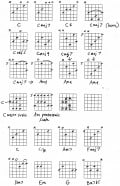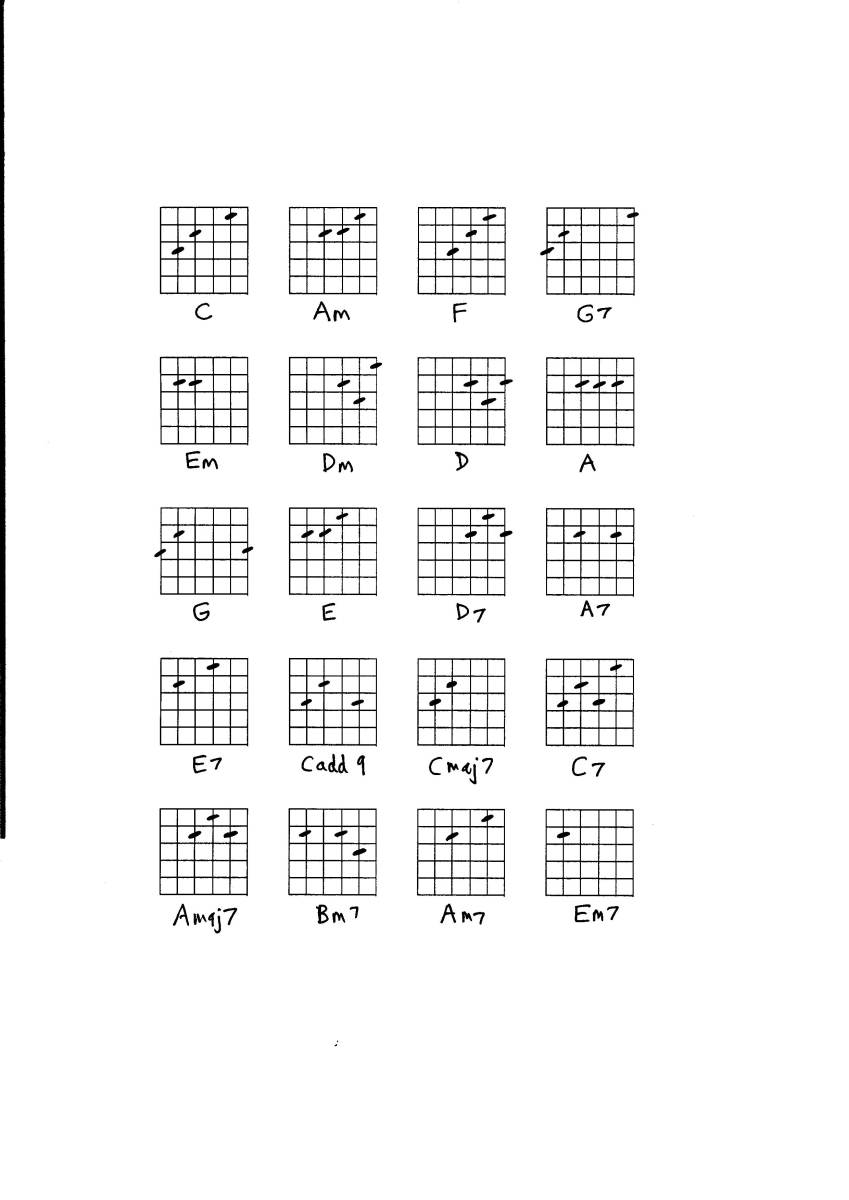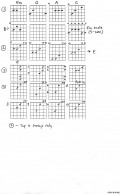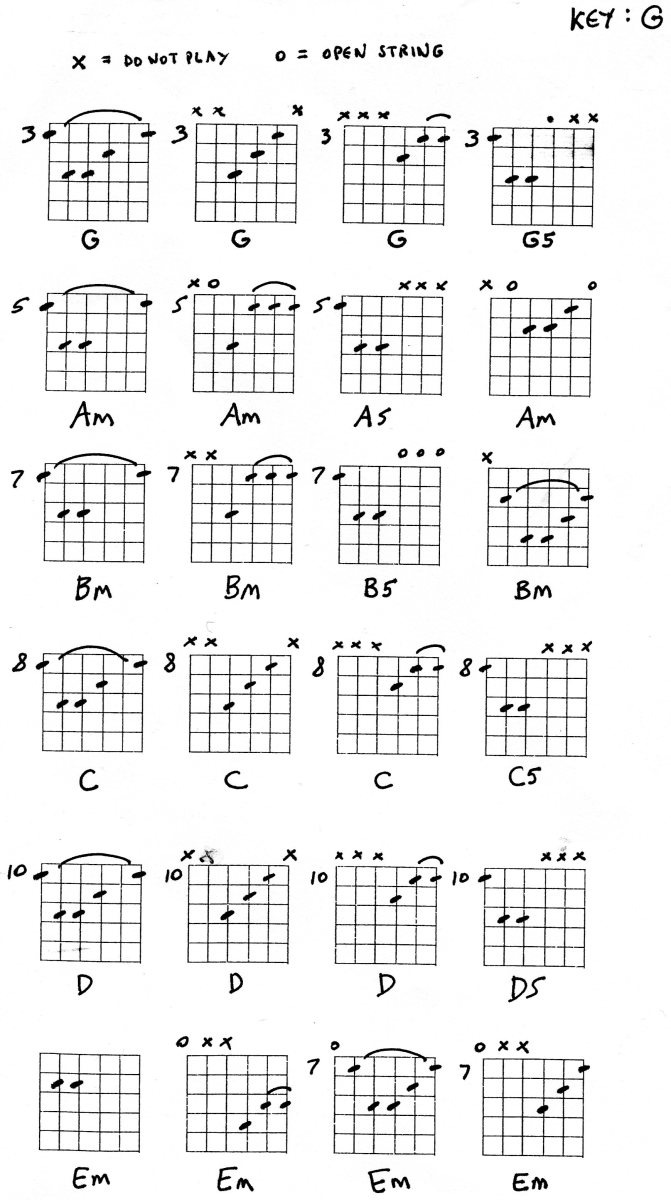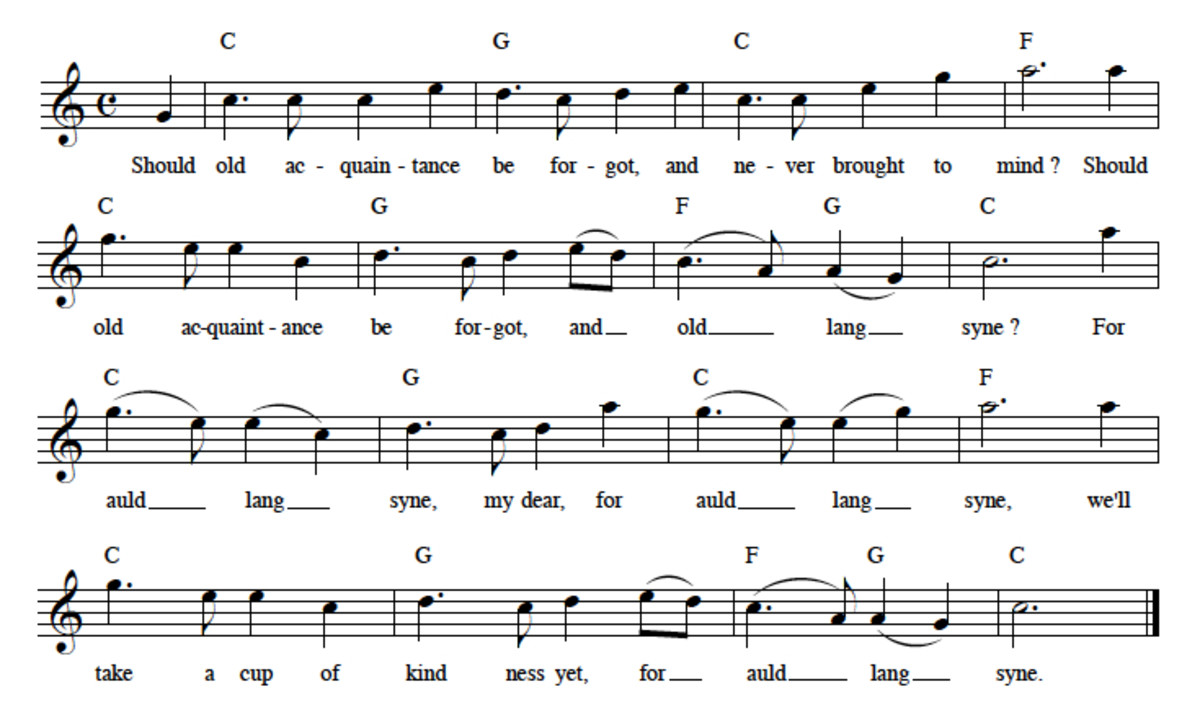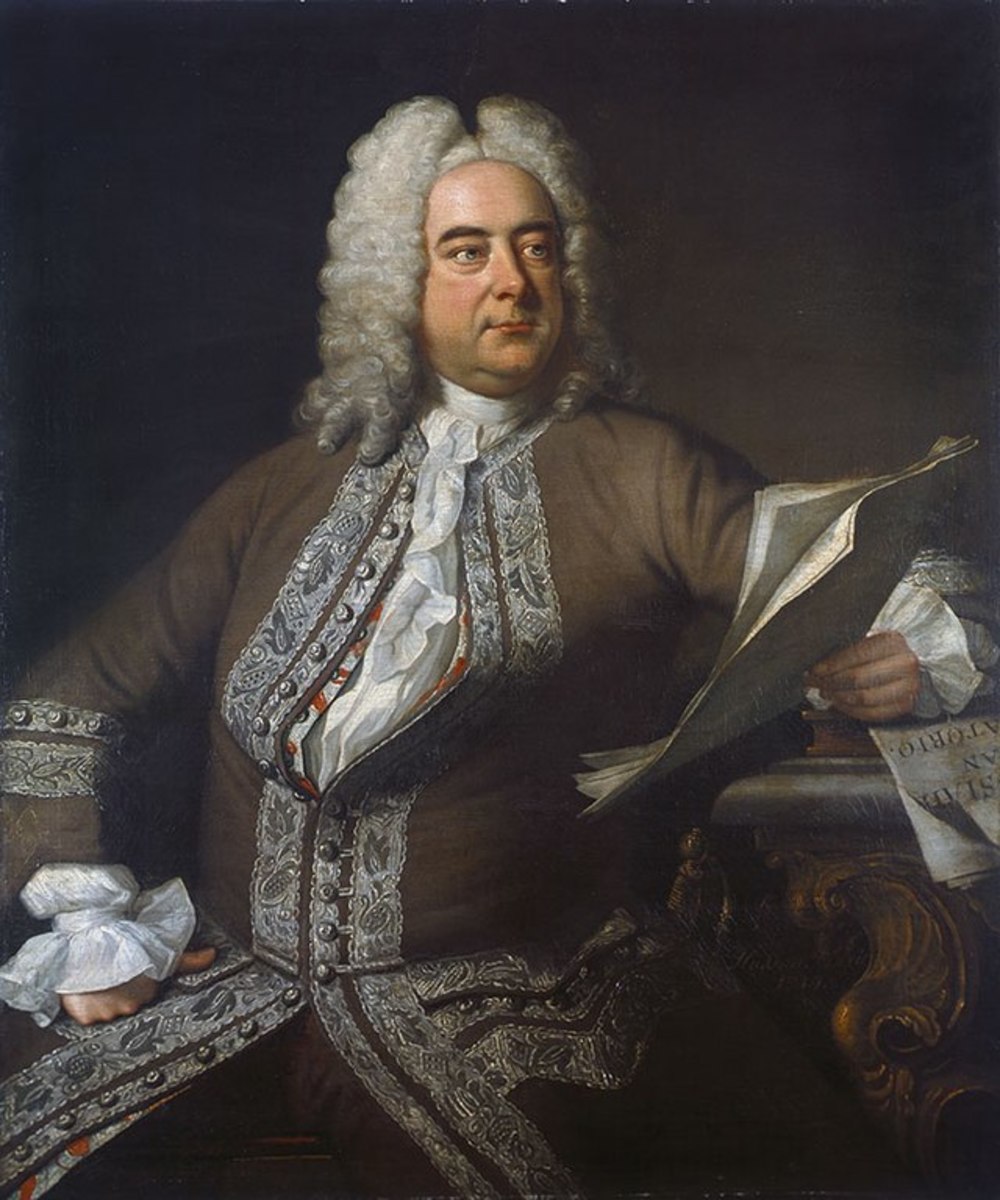Guitar Chords, Theory And Songs
Easy Music Theory for guitar
Most songs for guitar follow a fairly predictable course when you look at the guitar chords and scales that are used - and once you understand a little bit of theory it makes learning guitar so much easier. All the chords and scales are shown in the diagram below. m = minor, all the numbers refer to the interval, or distance from the starting note.
Let's start with the key of C.
- The notes in the major scale are: C D E F G A B C (shown in the first chord diagram)
- Every note can have a chord built on it, leading to
- C Dm Em F G Am Bm7b5 C (all the chords in the key of C)
- Now let's number both the scale notes and the chords, 1 to 8
- Note and chord 1 and 8 are the same, an octave apart, so there are only 7 notes and 7 chords to learn.
- Most songs are constructed with chords 1, 4 and 5 (I, IV and V)
- In this key that means C, F, and G
- G7 is often used instead of G, because it has a stronger pull back to the 1 chord
- F maj7 can be used instead of F, as it is easier to play and usually sounds nicer.
- The relative minor chord is chord 6 (vi) - which is Am
- To improvise over chords in C, just use Am pentatonic, which is called the relative minor scale. You could also use the C major scale, which is very similar but with two more notes.
- Am pentatonic scale is shown in the diagram. Think of it as a boxed pattern, between frets 5 and 8. To play this scale in other keys you can just move it up and down the neck like a template. The notes can be played in any order and will fit all the chords in the key of C (aka The Harmonised scale in C)
2 - Chord songs
Yes, there are songs, and successful songs at that, that only use two chords, the 1 chord and the 5 chord. Just using C and G7 (I and V) you can play
How Much is That Doggie in the Window (3/4 time) - more fun with barking noises
Just Want to Dance the Night Away (4/4 time) - more fun with a horn section
- You could solo over these chords using Am pentatonic.
3 - Chord songs
There are dozens of these - but good examples would be La Bamba, and Twist and Shout by The Beatles, which is basically the same song.
- Now we are using C, F, and G7, or I IV and V in the key of C
- Many Hank Williams, Johnny Cash, country songs from the 1960s are based around these chords.
4 - Chord Songs
Just by adding the relative minor chord, chord vi or Am, we can play many more songs.
- Stand By Me is a good example
- Chords are C Am F G7 C
- As we are still in the same key, the Am pentatonic scale is still working fine.
- Country songs, such as many Hank Williams songs, and 50s and 60s songs in general will often use C, F, and G7 and add a D7 to the mix - strictly speaking, this departs from the key of C, but it's only a temporary change of key which adds some interest and variety.
- Examples of this are Hey Good Lookin', Your Cheatin' Heart, You Win Again. All great Hank Williams songs.
6 - Chord Songs
Now if we add chords ii and iii (Dm and Em) we can play songs such as Like A Rolling Stone, a Dylan song that has been voted the best ever rock song.
- The chord sequence for this song starts with chords 1 - 5 in the key of C
- C Dm Em F G7 (repeat)
- We are still in the key of C, and we can use the Am pentatonic scale for solos and the melody line
- The chorus of this song is based around the I IV V sequence again, C,F and G7.
Key of C: scales and chords
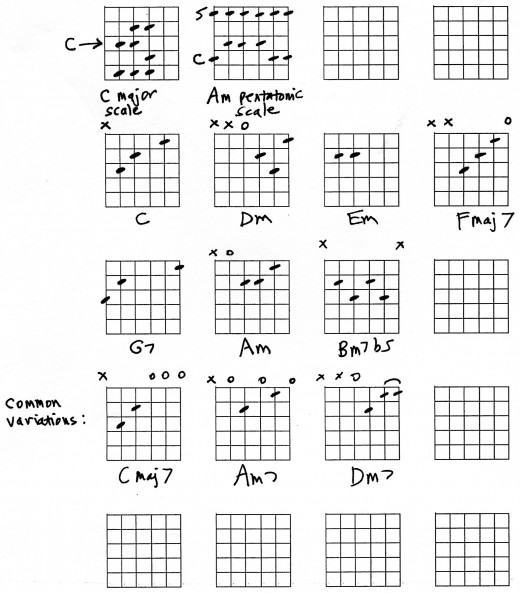
Reading Chord Grids
The 6 vertical lines are the strings, the horizontal lines are the frets.
Note that the chords here are on the easy side, and there are many different chord forms that could be used.
Other keys
There are major and minor keys, but the good news is - all the distances or intervals and all the scale patterns are exactly the same as the ones we've described here, they just start at a different fret. Here are a few examples:
Key of D, just move all the chords up 2 frets (because C to D is a two fret distance) Relative minor chord is now Bm. 1, 4, and 5 chords are now D, G, A7. Major scale and minor pentatonic scale exactly the same pattern, moved up 2 frets.
- Relative minor of C is Am. if you look at the notes in each chord, they are almost the same, and only the bass note has changed between C and Am7.
- For the key of Am, all the chords are the same as C, just starting at a different point in the sequence.
- So the chords are: Am, Bm7b5, C, Dm, Em, F, G7, Am
- In practice, the Em chord is usually changed to E7 - same reason, it is now a dominant 7th or 5 chord leading back to the home chord, Am.
- The Am pentatonic scale is the best scale to fit an Am chord, and also all the chords in the key of Am.
Songs in A minor
- Rhiannon is very easy (Fleetwood Mac) and just uses Am, Fmaj7 and C
- Angie (Rolling Stones) is also in this key
- Remember, the chords are basically the same as the chords in the key of C, except E7 is usually used in place of Em
- Best scale is still Am pentatonic, but you can also put the missing 2 notes of the C scale back in the mix
- The 2 notes are B and F - both notes which can clash a little with some of the chords
- When an E7 appears, safest thing is to play a G sharp note to make a better fit with the chord, but only on the E7 chord.
Other keys, relative minor chords
Key
| Tonic (I)
| Relative minor (vi)
|
|---|---|---|
G
| G
| Em
|
A
| A
| F ♯ m
|
B♭
| B♭
| Gm
|
C
| C
| Am
|
D
| D
| Bm
|
E
| E
| C ♯ m
|
F
| F
| Dm
|
Even though the key is different, the distance between the chords is the same. So it's a regular pattern that can be used in any key.
Chord changes
In the real world of playing songs, you will find this chord progression is very, very common. So a good practice tip is to learn the I to vi chords in all the common keys shown above, and it will really pay dividends when you are learning songs. Also, learn the ii V I chord sequence in these keys for the same reason. In the key of C this would be Dm G7 C. The same chord sequence in the key of D would be:
Em, A7, D. The distance between chords, and the sound, is the same but now at a different pitch.
Need help with music theory?
You can use the comments box to ask questions about music theory, as applied to guitar or piano.
It's worth noting that all this theory will work on piano or keyboard equally well.

